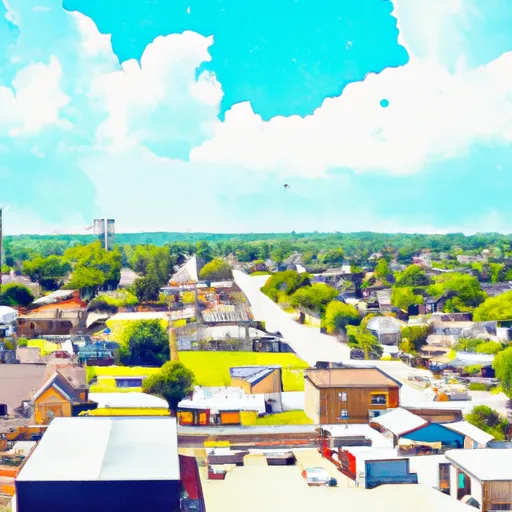-
 Snoflo Premium
Snoflo Premium
Get unlimited access to all our content
With no Ad interruptions! - Start Your Free Trial Login with existing account
Leona
Eden Index
Climate
8.3
•
Recreation
1.7
•
Community
•
Safeguard
3.9/10

Leona, Texas is a small town located in Leon County, in the eastern part of the state. The climate in Leona is classified as humid subtropical, characterized by hot and humid summers, mild winters, and a moderate amount of rainfall throughout the year. Summers are typically hot with temperatures often exceeding 90°F (32°C), while winters are mild with temperatures rarely dropping below freezing. The area is prone to thunderstorms and occasional hurricanes, especially during the summer months.
Leona is situated near several bodies of water, including Lake Limestone and the Trinity River. These water sources provide hydrology constituents to the town, offering opportunities for fishing, boating, and water sports. Lake Limestone, in particular, is known for its abundance of largemouth bass, catfish, and crappie.
The outdoor recreation opportunities in Leona are primarily centered around the region's natural beauty. The area is home to several parks and wildlife management areas, such as the Gus Engeling Wildlife Management Area and the Fort Boggy State Park. These areas offer hiking trails, camping facilities, and opportunities for bird watching and wildlife observation.
In conclusion, Leona, Texas experiences a humid subtropical climate, with hot summers and mild winters. The town benefits from its proximity to water sources like Lake Limestone and the Trinity River, providing hydrology constituents and opportunities for fishing and water sports. Additionally, Leona offers various outdoor recreational activities centered around its parks and wildlife management areas.
What is the Eden Index?
The Snoflo Eden Index serves as a comprehensive rating system for regions, evaluating their desirability through a holistic assessment of climate health, outdoor recreation opportunities, and natural disaster risk, acknowledging the profound impact of these factors on livability and well-being.
Climate Health Indicator (CHI): 8.3
Leona receives approximately
1084mm of rain per year,
with humidity levels near 84%
and air temperatures averaging around
20°C.
Leona has a plant hardyness factor of
8, meaning
plants and agriculture in this region tend to thrive here all year round.
By considering the ideal temperature range, reliable water supplies, clean air, and stable seasonal rain or snowpacks, the Climate Health Indicator (CHI) underscores the significance of a healthy climate as the foundation for quality living.
A healthy climate is paramount for ensuring a high quality of life and livability in a region, fostering both physical well-being and environmental harmony. This can be characterized by ideal temperatures, reliable access to water supplies, clean air, and consistent seasonal rain or snowpacks.
Weather Forecast
Streamflow Conditions
Lower Trinity
Area Rivers
Lower Trinity
Snowpack Depths
Lower Trinity
Reservoir Storage Capacity
Lower Trinity
Groundwater Levels
Recreational Opportunity Index (ROI): 1.7
The Recreational Opportunity Index (ROI) recognizes the value of outdoor recreational options, such as parks, hiking trails, camping sites, and fishing spots, while acknowledging that climate plays a pivotal role in ensuring the comfort and consistency of these experiences.
Access to outdoor recreational opportunities, encompassing activities such as parks, hiking, camping, and fishing, is crucial for overall well-being, and the climate plays a pivotal role in enabling and enhancing these experiences, ensuring that individuals can engage in nature-based activities comfortably and consistently.
Camping Areas
| Campground | Campsites | Reservations | Toilets | Showers | Elevation |
|---|---|---|---|---|---|
| Wind Point Park | 135 | 457 ft | |||
| Stephen Austin State Park | 78 | 135 ft | |||
| Hollywood Bottom Park | None | 74 ft | |||
| Purtis Creek State Park | 78 | 424 ft | |||
| Navasota RV Park | 10 | 221 ft | |||
| Fairfield Lake State Park | 135 | 382 ft | |||
| Lake Tawakoni State Park | 78 | 457 ft | |||
| Gibbons Creek Reservoir | 27 | 255 ft |
Catastrophe Safeguard Index (CSI):
The Catastrophe Safeguard Index (CSI) recognizes that natural disaster risk, encompassing floods, fires, hurricanes, and tornadoes, can drastically affect safety and the overall appeal of an area.
The level of natural disaster risk in a region significantly affects safety and the overall livability, with climate change amplifying these risks by potentially increasing the frequency and intensity of events like floods, fires, hurricanes, and tornadoes, thereby posing substantial challenges to community resilience and well-being.
Community Resilience Indicator (CRI):
The Community Resilience Indicator (CRI) recognizes that education, healthcare, and socioeconomics are crucial to the well-being of a region. The CRI acknowledges the profound impact of these elements on residents' overall quality of life. By evaluating educational resources, healthcare accessibility, and economic inclusivity, the index captures the essential aspects that contribute to a thriving community, fostering resident satisfaction, equity, and social cohesion.

